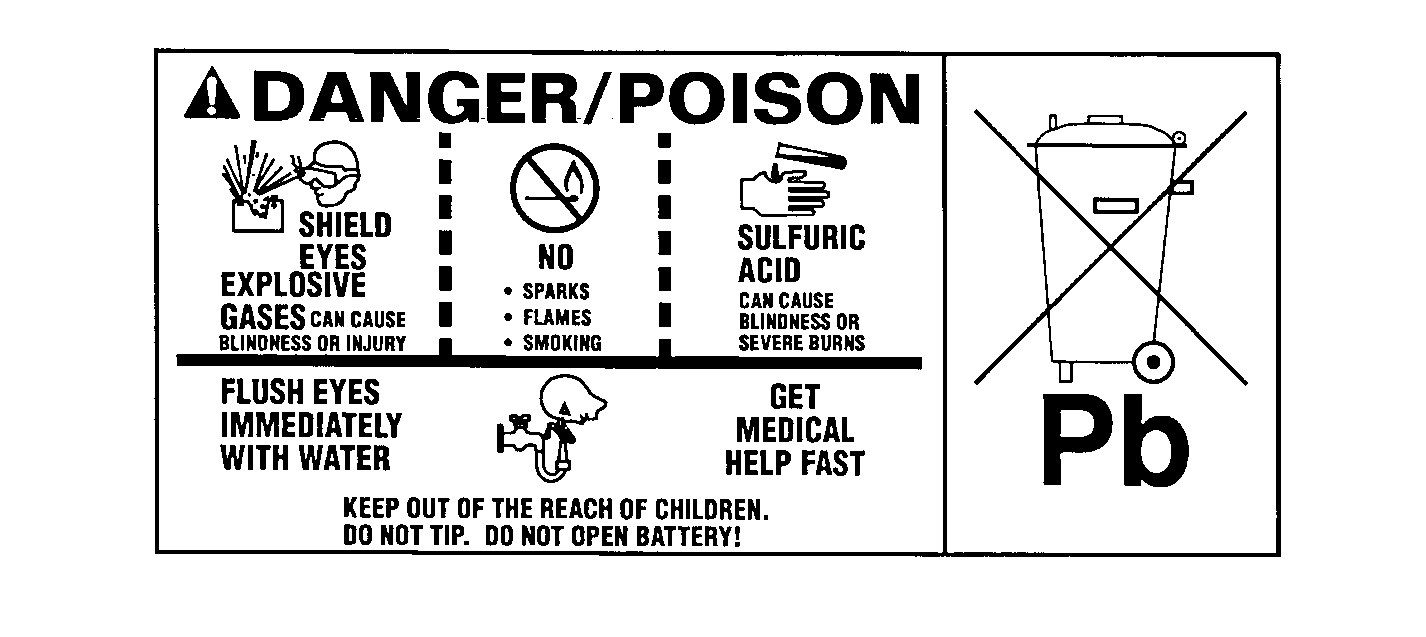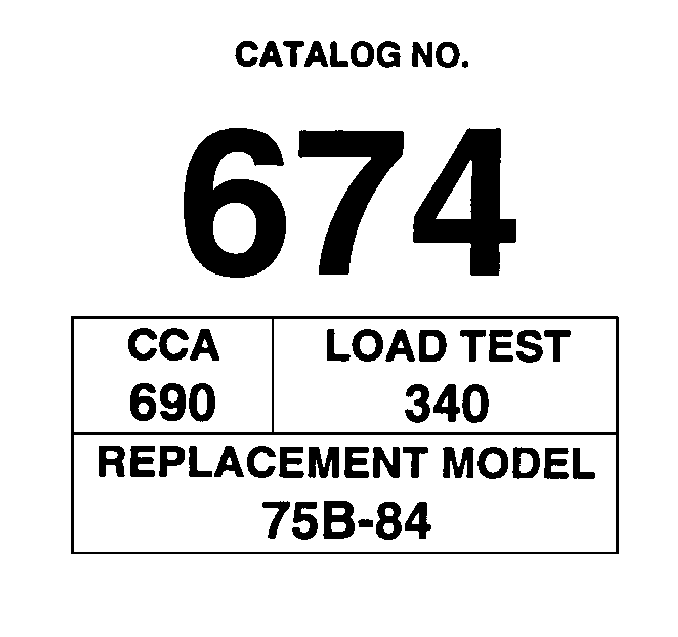
Caution: Batteries produce explosive gases. Batteries contain corrosive acid.
Batteries supply levels of electrical current high enough to cause burns.
Therefore, in order to reduce the risk of personal injury while working
near a battery, observe the following guidelines:
| • | Always shield your eyes. |
| • | Avoid leaning over the battery whenever possible. |
| • | Do not expose the battery to open flames or sparks. |
| • | Do not allow battery acid to contact the eyes or the skin. |
| - | Flush any contacted areas with water immediately and thoroughly. |
The maintenance free battery is standard equipment. The battery is completely
sealed except for two small vent holes in the sides. The vent holes allow
a small amount of gas produced in the battery to escape.
The battery provides the following three functions in the electrical
system:
| • | The battery provides a source of energy for cranking the engine. |
| • | The battery acts as a voltage stabilizer for the electrical system. |
| • | The battery can provide energy when the electrical load exceeds
the output of the generator, for a limited time. |
Electrolyte Freezing
The freezing point of the battery electrolyte depends on the battery's
specific gravity.
Freezing a battery can ruin it.
Protect the battery from freezing by keeping it fully charged.
With the green dot showing in the built-in hydrometer, the battery will
not freeze until the temperature drops below -32°C (-25°F).
A fully charged battery will not freeze until the temperature drops below
-54°C (-65°F). Refer to
Battery Hydrometer Displays Yellow Dot
.
Battery Ratings

The battery specification
label contains useful information for servicing the battery. The information
includes test ratings, original equipment and recommended replacement part
numbers. Refer to
Battery Usage
.
The battery has two ratings: Cold Cranking Amperage (CCA) and Reserve
Capacity.
| • | Cold Cranking Amperage indicates the battery's ability to crank
the engine during cold temperatures. |
| • | The CCA rating is the minimum amperage the battery must maintain
for 30 seconds at -18°C (0°F), while staying above 7.2 volts. |
| • | The actual performance of the battery varies with temperature,
electrical load, and the condition of the vehicle's electrical condition. |
Reserve Capacity
Reserve capacity is the maximum amount of time (in minutes) it will
take for a fully charged battery, being discharged at a constant rate of 25
amperes with the temperature remaining at 27°C (80°F), to reach
a terminal voltage of 10.5 volts.
| • | Reserve capacity is an estimate of how long a person may operate
the vehicle under the following conditions: |
| - | A minimum electrical load (most accessories are turned off). |
| • | How long the battery will actually last when the vehicle is being
driven without generator output depends on the following factors: |
| - | The condition of the battery |
Battery Protection During Storage
Certain electronic devices on the vehicle maintain a small continuous
current drain (parasitic load) on the battery, such as the PCM or the VCM.
A battery this not used for an extended period of time will discharge.
Eventually permanent damage will result. Discharged batteries will also
freeze in cold weather.
| • | Do the following in order to maintain the battery state of charge
while storing the vehicle for more than 30 days: |
| - | Ensure that the green dot is visible in the built-in hydrometer. |
| - | Disconnect the battery negative cable to protect the battery from
discharge by parasitic current drains. |
| • | When it is time to reconnect the battery, use the following procedure: |
Notice: Use the correct fastener in the correct location. Replacement fasteners
must be the correct part number for that application. Fasteners requiring
replacement or fasteners requiring the use of thread locking compound or sealant
are identified in the service procedure. Do not use paints, lubricants, or
corrosion inhibitors on fasteners or fastener joint surfaces unless specified.
These coatings affect fastener torque and joint clamping force and may damage
the fastener. Use the correct tightening sequence and specifications when
installing fasteners in order to avoid damage to parts and systems.
| - | Lightly wire brush
any oxidation from the contract face of the battery terminal and the battery
post before reattaching the battery negative cable. |
Tighten
Tighten the battery negative cable bolt to 15 N·m (11 lb ft).
| - | Reset the clock and the push-button tuning radio before the vehicle
is put back into service. |
| • | Maintain a high state of charge when the battery cannot be disconnected. |
| • | Establish a regular schedule for the recharging the battery every
20-45 days. |
| - | When a battery is found without a green dot visible in the hydrometer,
promptly recharge the battery. |
| - | To reduce charging time, use a battery charger that can produce
a charging voltage of at least 16 Volts. |
| - | Original equipment maintenance free batteries are not damaged
by charging rates of 50 Amps or more. |
| - | The battery will not be damaged as long as the battery does not
spew acid from the vents or get hotter than 52°C (125°F). |
| - | Check the battery being charged every 45-60 minutes. |
| - | If gasses or overheating does occur, reduce the rate of charge,
or stop if necessary. |
| - | Avoid overcharging by stopping one hour after the green dot appears
in the hydrometer. |
| • | A battery that has remained in a discharged state for long period
of time is difficult to recharge or may be permanently damaged. |


